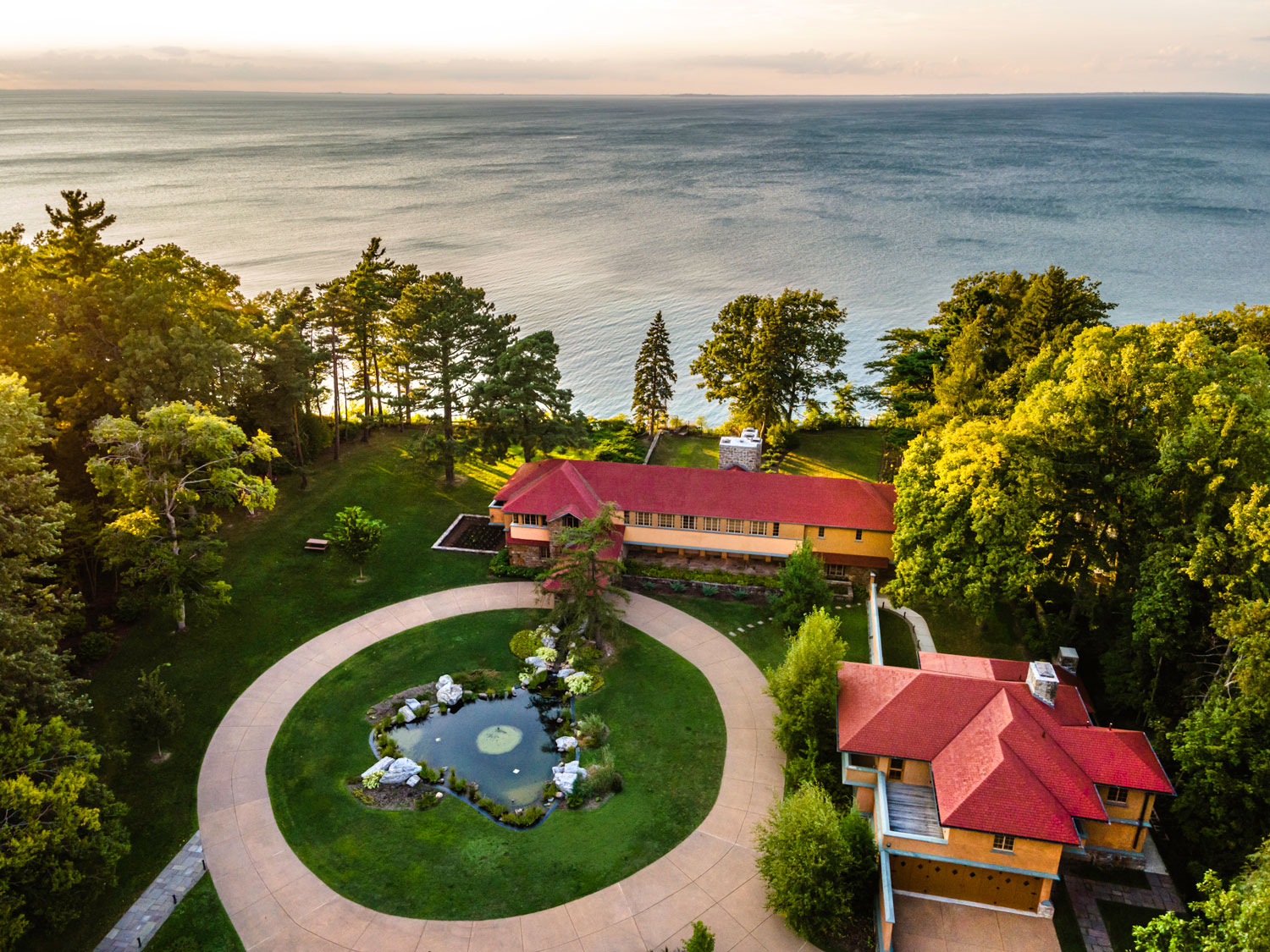This article originally appeared in Bloomberg on October 2, 2012.
When Larkin Soap magnate Darwin D. Martin was ready to build his dream house in Buffalo, New York, he called on the country’s hottest young architect, Frank Lloyd Wright.
Finished in 1905, the 15,000-square-foot residence in the tony Parkside section of town, cost what was then a staggering $175,000 (about $4.32 million today). Wright called it his “domestic symphony.”
I first visited the Martin house nearly 20 years ago, when it was beginning its facelift. News that the work was finally nearing completion and that the house had opened to the public brought me back to Buffalo, which is also dusting itself off after a few sad decades.
“You get a sense of a city on the move,” I was told by native son A. R. Gurney, author of “The Dining Room” and other celebrated plays. “For young people there is a lot of life, lots of little theaters all over town are doing exciting work now.”
This was a prosperous port city at the turn of the 19th century, a commercial gateway between the East Coast and the Midwest.
Central Park visionary Frederick Law Olmsted designed gracefully landscaped parks, boulevards and circles. Street lighting came early to the city with enterprising use of hydro- electric power courtesy of Niagara Falls. Now Buffalo is getting a cultural recharge.
National Landmark
Following Wright’s original drawings and plans, the Martin House Complex is a landscaped grouping of five interconnected buildings. The $50 million restoration began in 1996 and is overseen by the nonprofit Martin House Restoration Corporation.
My guide through the designated National Historic Landmark was the MHRC’s executive director, Mary Roberts.
Our first stop was the Barton House, named for Martin’s sister and brother-in-law and built in 1903 as a “test.” It cost more than twice the estimated budget of $5,000. Even so, Martin was delighted with the results, expressed in a prolific exchange of letters with Wright.
We then went next door to the main residence. Wright designed the sprawling house in his signature Prairie style, with a facade that features yellow brick with a cantilevered glaze-tiled roof, imposing chimneys and massive urns cascading with plants.
A harmonious and elegant 100-foot pergola radiates from the building, connecting to a glowing, glass-roofed conservatory and a carriage house, all faithfully rebuilt (the original structures were razed in 1962).
Art Glass
The warm interior features oak woodwork, custom-made furniture and earth-colored textiles. Art glass windows, doors and skylights fill the house with natural light. A central double-sided hearth will soon be reclad with glass mosaics depicting wisteria vines.
During my visit, a master carpenter was constructing and replacing intricate wood elements throughout the house.
After Martin’s death in 1935, the house, adjacent buildings and gardens were eventually abandoned. Roberts said “the MHRC has taken the Complex from a once- neglected eyesore to a symbol and rallying point for preservation, cultural tourism and the reinvention of a Rust Belt city.”
Graycliff Estate
From here I headed to Graycliff, finished in 1931, the summer retreat Wright designed for Martin’s wife, Isabelle. Sited high on a bluff overlooking Lake Erie, the estate is an easy 20-minute car ride from Buffalo in Derby, New York.
It is being restored by the Graycliff Conservancy, and also is open to the public. Reine Hauser, the executive director of the nonprofit, led me through the house and gardens. She pointed out recurring design themes, notably the diamond shapes seen in window casements and carried over to light fixtures.
Joined, corner glass panes anticipate the sophisticated windows Wright created in 1935 for his iconic Fallingwater, outside Pittsburgh.
The Graycliff restoration is not at the same stage of completion as the Martin House Complex, but I get a strong sense that it’s well along the way.
Architectural Riches
Frank Lloyd Wright wasn’t the only prominent architect at work in Buffalo. A whirlwind afternoon tour brings me to Eliel and Eero Saarinen’s Kleinhans Music Hall, home to the Buffalo Philharmonic Orchestra. That was followed by Louis Sullivan’s terra-cotta-ornamented Prudential (Guaranty) Building, another National Historic Landmark.
We also pass H.H. Richardson’s romanesque Buffalo State Hospital, with its imposing double towers, shuttered behind a chain-link fence and sorely in need of its perennially planned rescue.
My last stop is at one of Buffalo’s most famous buildings, the neo-classical-meets-modernist museum, the Albright-Knox Art Gallery. Buffalo architect Gordon Bunshaft designed the 1962 addition to house the modern collection.
In addition to major paintings by Picasso, Matisse and Pollock, the museum, celebrating its 150th anniversary, has acquired over the last decade nearly 1,200 works by more than 450 artists, including Matthew Barney, Jim Hodges, Catherine Opie and Cindy Sherman.
Urban Renewal
Downtown, a stately 110-year hotel has been carefully restored to its former glory. Completed at the cost of $43 million ($14 million coming from N.Y. State tax credits), with elegant shops, ballrooms, bars — the Hotel at the Lafayette has anchored the once-dodgy neighborhood.
At the hotel I had dinner at Mike A’s, run by James Beard Foundation-honored chef Mike Andrzejewski. Order the onion soup croquette as a first course.
Another sign of the economic re-birth is evident in a hip emerging area called Larkinville. It’s named for Darwin Martin’s Larkin Soap Company.
Sadly, no rescue awaits Larkin’s business headquarters. The company is long gone and so is its administration building. The fact that it, too, had been designed by Frank Lloyd Wright wasn’t enough to protect it from the wrecker’s ball in 1950.









